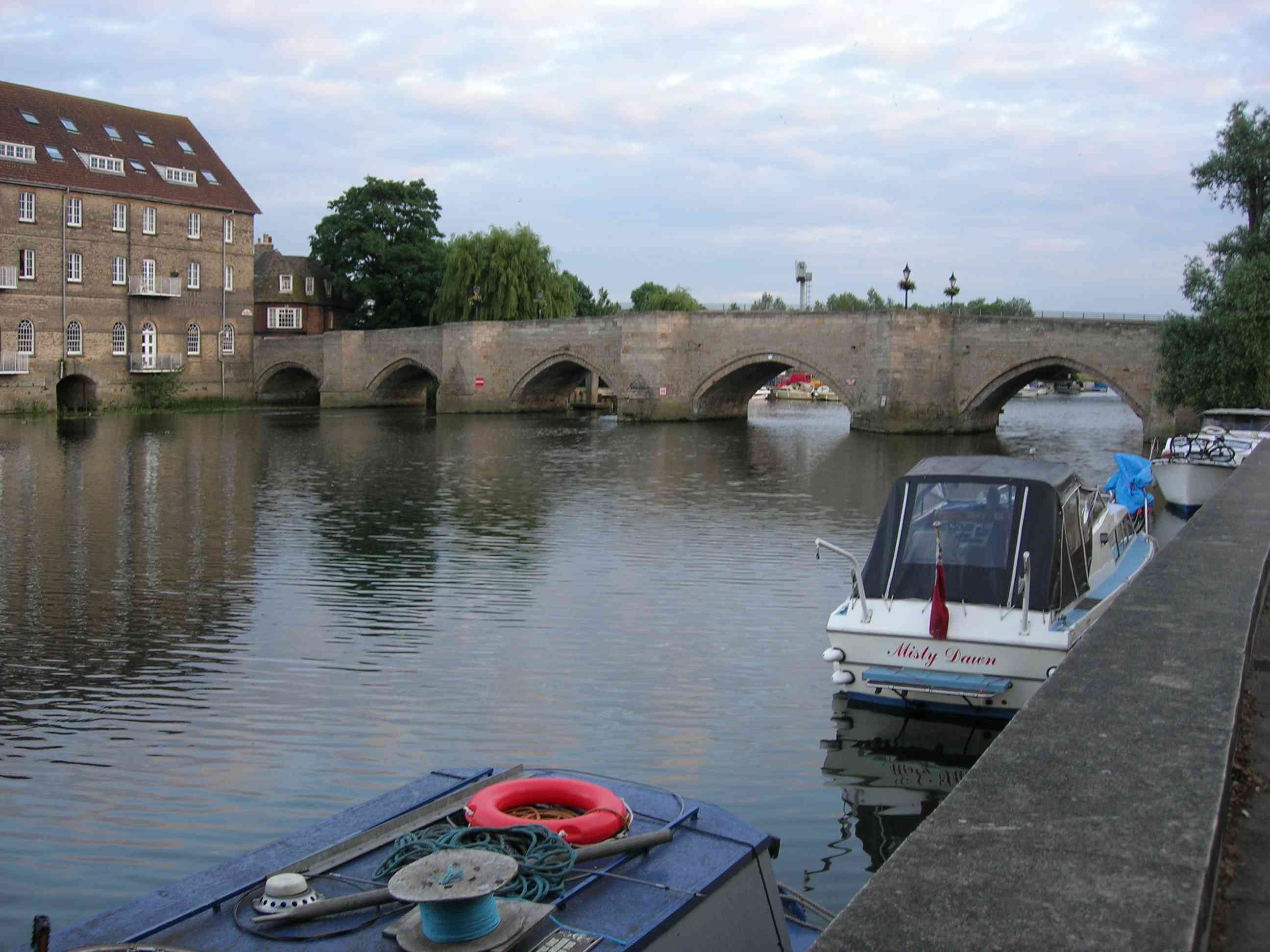|
History Of Buckinghamshire
Although the name Buckinghamshire is Anglo Saxon in origin meaning ''The district (scire) of Bucca's home'' (referring to Buckingham in the north of the county) the name has only been recorded since about the 12th century. The historic county itself has been in existence since it was a subdivision of the kingdom of Wessex in the 10th century. It was formed out of about 200 communities that could between them fund a castle in Buckingham, to defend against invading Danes. Human settlement in pre-history Some of the places in Buckinghamshire date back much further than the Anglo-Saxon period. Aylesbury, for example, is known from archaeological digs to date back at least as far as 1500 B.C. and the Icknield Way, which crosses the county, is pre-Roman in origin. There are a wealth of places that still have their Brythonic names ( Penn, Wendover), or a compound of Brythonic and Anglo Saxon ( Brill, Chetwode, Great Brickhill) and there are pre-Roman earthworks all over the county ... [...More Info...] [...Related Items...] OR: [Wikipedia] [Google] [Baidu] |
Great Brickhill
Great Brickhill is a village and civil parish in the unitary authority area of Buckinghamshire, England. It is on the border with the City of Milton Keynes, located south-east of Central Milton Keynes, and in the same direction from Fenny Stratford. History The village name is a compound of Brythonic and Anglo Saxon origins, which is a common occurrence in this part of the country. The Brythonic ''breg'' means 'hill', and the Anglo Saxon ''hyll'' also means 'hill'. In the Domesday Book of 1086 the village was recorded as ''Brichelle''. The affix 'Great' was added in the 12th century to differentiate from nearby Bow Brickhill and Little Brickhill. Robert Merydale was parson of the parish church of Great Brickhill in 1470, according to a legal record, in which Edward Lucy & Thomas Hampden claim that he owed them £20. Great Brickhill was described in 1806 in ''Magna Britannia'' as follows: :Great-Brickhill, in the hundred and deanery of Newport, lies about two miles and a ... [...More Info...] [...Related Items...] OR: [Wikipedia] [Google] [Baidu] |
Middle Stone Age
The Middle Stone Age (or MSA) was a period of African prehistory between the Early Stone Age and the Late Stone Age. It is generally considered to have begun around 280,000 years ago and ended around 50–25,000 years ago. The beginnings of particular MSA stone tools have their origins as far back as 550–500,000 years ago and as such some researchers consider this to be the beginnings of the MSA. The MSA is often mistakenly understood to be synonymous with the Middle Paleolithic of Europe, especially due to their roughly contemporaneous time span, however, the Middle Paleolithic of Europe represents an entirely different hominin population, ''Homo neanderthalensis'', than the MSA of Africa, which did not have Neanderthal populations. Additionally, current archaeological research in Africa has yielded much evidence to suggest that modern human behavior and cognition was beginning to develop much earlier in Africa during the MSA than it was in Europe during the Middle Paleol ... [...More Info...] [...Related Items...] OR: [Wikipedia] [Google] [Baidu] |
Wolverton And Greenleys
Wolverton and Greenleys is a civil parish with a town council in Milton Keynes, England. It is north-west of Central Milton Keynes, and according to the 2011 census had a population of 12,492. It includes Wolverton, Old Wolverton, Wolverton Mill, Greenleys and Stonebridge. ''Wolverton Online''. The parish is bounded to the north by the , to the east by the West Coast railway line, to the south by the Millers Way (H2) |
River Ouzel
The River Ouzel , also known as the River Lovat, is a river in England, and a tributary of the River Great Ouse. It rises in the Chiltern Hills and flows north to join the Ouse at Newport Pagnell. It is usually called the ''River Ouzel'', except near Newport Pagnell where both names are used. The name ''Lovat'' was recorded (in the form 'Lovente') in the thirteenth century, a map of 1724 marks the river as "Lowsel R", and a map surveyed in 1765 shows it as 'Ouzel River'. The modern Ordnance Survey uses only the name ''Ouzel'', except north of Willen Lake where it is marked as 'River Ouzel or Lovat'. Course From springs just north of Dagnall, the river initially forms the boundary between Bedfordshire and Buckinghamshire. It is joined by the Ouzel Brook from Houghton Regis, and by Whistle Brook (also known at Ivinghoe as ''Whizzle Brook'')F. G. Gurney, ''Yttingaford and the tenth-century bounds of Chalgrave and Linslade'', Bedfordshire Historical Record Society 5, 1920, p. ... [...More Info...] [...Related Items...] OR: [Wikipedia] [Google] [Baidu] |
River Great Ouse
The River Great Ouse () is a river in England, the longest of several British rivers called "Ouse". From Syresham in Northamptonshire, the Great Ouse flows through Buckinghamshire, Bedfordshire, Cambridgeshire and Norfolk to drain into the Wash and the North Sea near Kings Lynn. Authorities disagree both on the river's source and its length with one quoting and another . Mostly flowing north and east, it is the fifth longest river in the United Kingdom. The Great Ouse has been historically important for commercial navigation, and for draining the low-lying region through which it flows; its best-known tributary is the Cam, which runs through Cambridge. Its lower course passes through drained wetlands and fens and has been extensively modified, or channelised, to relieve flooding and provide a better route for barge traffic. The unmodified river would have changed course regularly after floods. The name ''Ouse'' is from the Celtic or pre-Celtic *''Udso-s'', and probably m ... [...More Info...] [...Related Items...] OR: [Wikipedia] [Google] [Baidu] |
Common Era
Common Era (CE) and Before the Common Era (BCE) are year notations for the Gregorian calendar (and its predecessor, the Julian calendar), the world's most widely used calendar era. Common Era and Before the Common Era are alternatives to the original Anno Domini (AD) and Before Christ (BC) notations used for the same calendar era. The two notation systems are numerically equivalent: " CE" and "AD " each describe the current year; "400 BCE" and "400 BC" are the same year. The expression traces back to 1615, when it first appeared in a book by Johannes Kepler as the la, annus aerae nostrae vulgaris (), and to 1635 in English as "Vulgar Era". The term "Common Era" can be found in English as early as 1708, and became more widely used in the mid-19th century by Jewish religious scholars. Since the later 20th century, BCE and CE have become popular in academic and scientific publications because BCE and CE are religiously neutral terms. They are used by others who wish to be sens ... [...More Info...] [...Related Items...] OR: [Wikipedia] [Google] [Baidu] |
Milton Keynes
Milton Keynes ( ) is a city and the largest settlement in Buckinghamshire, England, about north-west of London. At the 2021 Census, the population of its urban area was over . The River Great Ouse forms its northern boundary; a tributary, the River Ouzel, meanders through its linear parks and balancing lakes. Approximately 25% of the urban area is parkland or woodland and includes two Sites of Special Scientific Interest (SSSIs). In the 1960s, the UK government decided that a further generation of new towns in the South East of England was needed to relieve housing congestion in London. This new town (in planning documents, 'new city'), Milton Keynes, was to be the biggest yet, with a target population of 250,000 and a 'designated area' of about . At designation, its area incorporated the existing towns of Bletchley, Fenny Stratford, Wolverton and Stony Stratford, along with another fifteen villages and farmland in between. These settlements had an extensive hist ... [...More Info...] [...Related Items...] OR: [Wikipedia] [Google] [Baidu] |
Kimbles
Great and Little Kimble cum Marsh is a civil parish in central Buckinghamshire, England. It is located to the south of Aylesbury. The civil parish altogether holds the ancient ecclesiastical villages of Great Kimble, Little Kimble, Kimblewick and Marsh, and an area within Great Kimble called Smokey Row. The two separate parishes with the same name were amalgamated in 1885, but kept their separate churches, St Nicholas for Great Kimble on one part of the hillside and All Saints for Little Kimble on other side at the foot of the hill. They fall within the Hundred of Stone, which was originally one of the Three Hundreds of Aylesbury, later amalgamated into the Aylesbury Hundred. The parishes lie between Monks Risborough and Ellesborough and, like other parishes on the north side of the Chilterns, their topography are that of long and narrow strip parishes, including a section of the scarp and extending into the vale below. In length the combined parish extends for about from near ... [...More Info...] [...Related Items...] OR: [Wikipedia] [Google] [Baidu] |
Village
A village is a clustered human settlement or community, larger than a hamlet but smaller than a town (although the word is often used to describe both hamlets and smaller towns), with a population typically ranging from a few hundred to a few thousand. Though villages are often located in rural areas, the term urban village is also applied to certain urban neighborhoods. Villages are normally permanent, with fixed dwellings; however, transient villages can occur. Further, the dwellings of a village are fairly close to one another, not scattered broadly over the landscape, as a dispersed settlement. In the past, villages were a usual form of community for societies that practice subsistence agriculture, and also for some non-agricultural societies. In Great Britain, a hamlet earned the right to be called a village when it built a church. [...More Info...] [...Related Items...] OR: [Wikipedia] [Google] [Baidu] |
Britons (historic)
The Britons ( *''Pritanī'', la, Britanni), also known as Celtic Britons or Ancient Britons, were people of Celtic language and culture who inhabited Great Britain from at least the British Iron Age and into the Middle Ages, at which point they diverged into the Welsh, Cornish and Bretons (among others). They spoke the Common Brittonic language, the ancestor of the modern Brittonic languages. The earliest written evidence for the Britons is from Greco-Roman writers and dates to the Iron Age.Koch, pp. 291–292. Celtic Britain was made up of many tribes and kingdoms, associated with various hillforts. The Britons followed an Ancient Celtic religion overseen by druids. Some of the southern tribes had strong links with mainland Europe, especially Gaul and Belgica, and minted their own coins. The Roman Empire conquered most of Britain in the 1st century, creating the province of Britannia. The Romans invaded northern Britain, but the Britons and Caledonians in the nort ... [...More Info...] [...Related Items...] OR: [Wikipedia] [Google] [Baidu] |
Catuvellauni
The Catuvellauni (Common Brittonic: *''Catu-wellaunī'', "war-chiefs") were a Celtic tribe or state of southeastern Britain before the Roman conquest, attested by inscriptions into the 4th century. The fortunes of the Catuvellauni and their kings before the conquest can be traced through ancient coins and scattered references in classical histories. They are mentioned by Cassius Dio, who implies that they led the resistance against the conquest in AD 43. They appear as one of the '' civitates'' of Roman Britain in Ptolemy's ''Geography'' in the 2nd century, occupying the town of Verlamion (modern St Albans) and the surrounding areas of Hertfordshire, Bedfordshire and southern Cambridgeshire. Their territory was bordered to the north by the Iceni and Corieltauvi, to the east by the Trinovantes, to the west by the Dobunni and Atrebates, and to the south by the Regni and Cantiaci. Name The name 'Catuvellauni' (Common Brittonic: *''Catu-wellaunī/Catu-uellaunī'', 'war-c ... [...More Info...] [...Related Items...] OR: [Wikipedia] [Google] [Baidu] |






